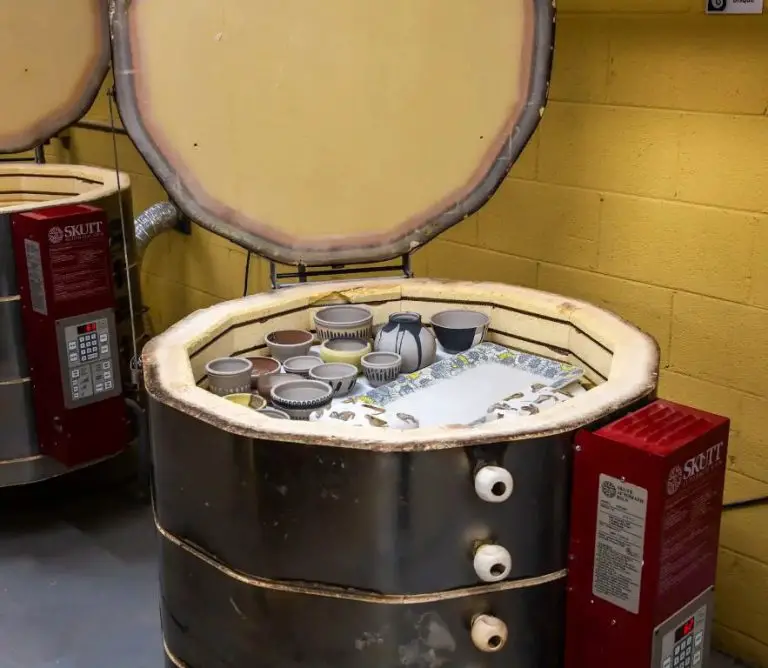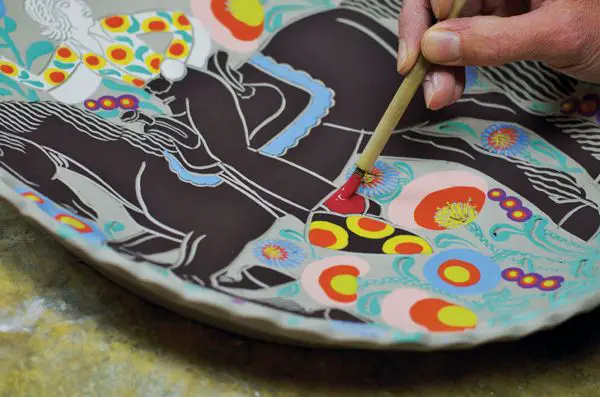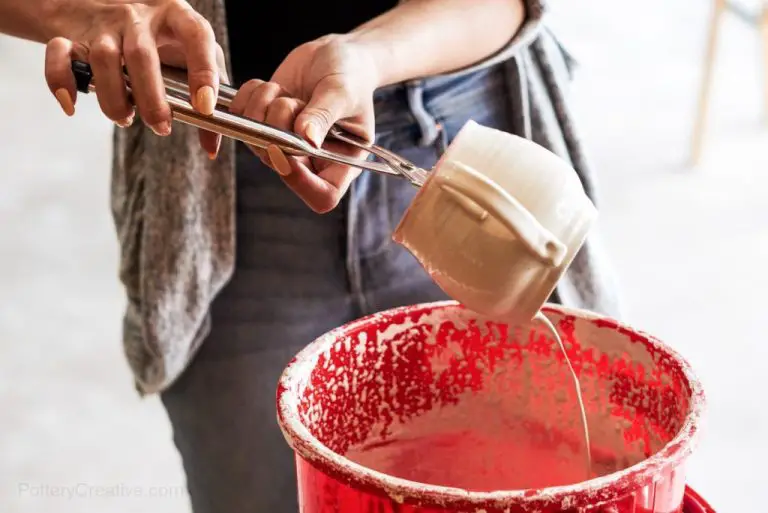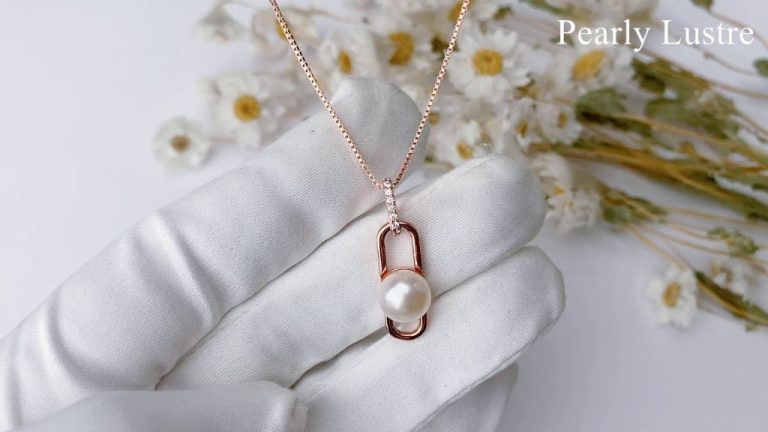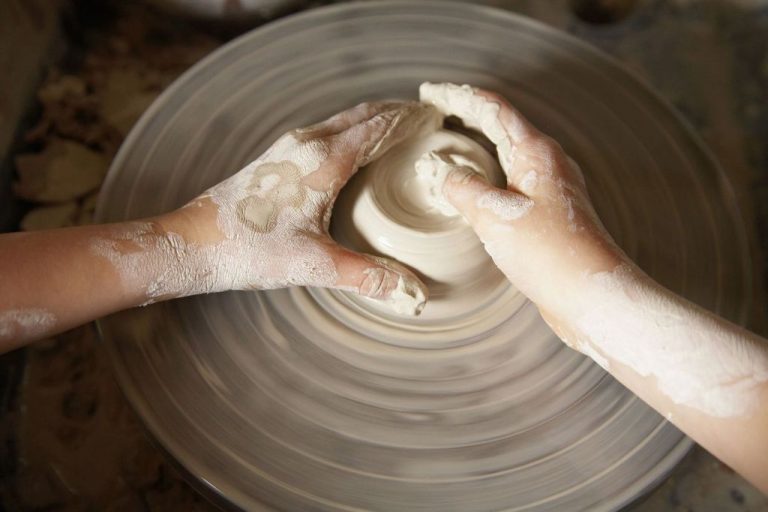Can You Turn Clay Into Ceramic?
What is Clay?
Clay is a fine-grained natural material containing minerals like kaolinite, montmorillonite, and illite among others. The clay is formed over long periods of time from the gradual chemical weathering of rocks through exposure to the atmosphere and water. Clay contains varying amounts of water trapped in the mineral structure, which causes the clay to be moldable and able to take on shape. Once the clay is fired at high temperatures, the water evaporates and the clay hardens into a permanent shape known as ceramic.
There are several major types of clay distinguished by the mineral content and firing characteristics:
- Kaolin – Also known as china clay, this white clay has a low plasticity and becomes hard and brittle when fired.
- Ball clay – This is more plastic and sticky compared to kaolin and is used for making ceramic pieces like tableware.
- Fire clay – Fire clay can withstand very high temperatures and is used to line kilns and ovens.
- Stoneware clay – Mid-range firing clays used for making stoneware dishes and pots.
- Earthenware clay – Lower firing temperature clay for making earthenware pottery.
The specific composition and quantities of the clay minerals give different types of clay their unique working properties for pottery and ceramic work.
What is Ceramic?
Ceramic is an inorganic, nonmetallic solid material made up of either metal or nonmetal compounds that have been shaped and then hardened by heating to high temperatures. The most common ceramics are composed of clays, silicates, and oxides.
The word “ceramic” comes from the Greek word keramos, meaning “potter” or “pottery”. This is because one of the most common applications of ceramics is to make pottery items like vases, bowls, and tiles.
Ceramics can be classified into three main types:
- Earthenware – This is pottery that has been fired at relatively low temperatures between 1000°F to 1200°F. It is porous and not fully vitrified.
- Stoneware – This type of ceramic is fired between 2200°F to 2400°F making it fully vitrified and non-porous. Stoneware has very low porosity.
- Porcelain – Porcelain is fired at an even higher temperature between 2200°F to 2400°F. It is highly vitrified and impermeable to water. Porcelain is usually white or off-white and translucent.
Some key properties that distinguish ceramics are hardness, brittleness, high melting temperatures, oxidation resistance, and corrosion resistance. Their composition and production process allows them to withstand high temperatures and pressures, making ceramics integral to technologies like space shuttles, gas turbines, and nuclear reactors.
The Science Behind Turning Clay into Ceramic
The process of turning clay into ceramic involves chemical changes that take place during the firing process. Clay is primarily made up of hydrated aluminum silicates, along with other mineral impurities that give clay its unique properties. When clay is shaped and heated to high temperatures in a kiln, chemical and physical transformations occur.
During the firing process, clay first loses any absorbed water below 150°C. From 150-600°C, chemically combined water and organic matter is burnt off in a process called calcination. This causes the clay to harden as water is removed from the mineral compounds. Between 600-900°C, reactions occur between silica and alumina compounds in the clay, leading to formation of new crystalline structures. The clay vitrifies and fuses into a dense, hard material. Above 900°C, the ceramic becomes fully vitrified and any remaining porosity is eliminated. The chemical changes create a hard, durable material that is resistant to water and chemicals – the finished ceramic.
The firing process permanently alters the clay’s chemical structure through heat exposure. The type of clay body and firing temperature/duration impact the chemical reactions and physical properties of the finished ceramic piece. With the right clay and kiln firing, the soft, malleable clay is chemically transformed into a hardened ceramic material.
Shaping and Molding the Clay
Once you have your clay prepared, it’s time to start shaping and molding it into the ceramic piece you envision. When working by hand without a pottery wheel, there are a few techniques you can use to handbuild clay sculptures and functional wares.
Pinching
Pinching is likely the simplest handbuilding technique. Take a ball of clay and pinch it between your fingers and thumbs to form basic shapes like bowls, cups, vases. Pinch pots allow you to gradually shape the clay into thinner or thicker sections as desired. This technique is great for making small bowls, lidded jars, and spherical shapes.
Coiling
The coil building method involves rolling out sausage-like coils of clay and stacking or laying them to build up 3D shapes. Coils can be smoothed together or left showing as part of the aesthetic. Vases, pots, cups, bowls, and many other vessels work well when made with coiling techniques. The thickness of the coils determines the sturdiness of the final piece.
Slab Building
Slab building involves rolling out flat sheets or slabs of clay and cutting and assembling them to construct forms. Clay can be rolled to consistency using a rolling pin, extruder, or slab roller. Slab pieces can be simply stacked or joined together using the score and slip technique. Many sculptural forms work well when slab built. Leaving slabs showing instead of smoothing joints allows for textural styles.
Drape Molding
For drape molding, soft slabs of clay are draped over forms to create shapes. Bowls, vases, sculptural pieces, and more can be made this way. The clay slab is allowed to hang and dry partially before removing from the form. The pieces maintain a rounded, smoothly undulating shape from the draping effect. Simple forms like bowls, balloons, or containers make great molds.
Glazing and Decorating
Once the clay has been shaped and fired into ceramic, the next step is applying decorative glazes and finishes. Glazes serve both decorative and functional purposes, as they add color, shine, and create a protective coating on the ceramic surface.
Glazes are made from a mixture of minerals, chemicals, and coloring oxides blended into a liquid suspension. Common ingredients include silica, feldspars, kaolin, quartz, dolomite, and colorants. The raw materials provide glass formers, fluxes, and stabilizers that control how the glaze melts and interacts with the clay body during firing. Glazes can produce a matte, satin, or glossy finish depending on the ingredients and firing temperature.
There are many techniques to decorate greenware or bisqueware clay:
- Glazing – Applying colored glazes by brushing, dipping, or spraying
- Underglazes – Painting designs on bisqueware that interact with a clear glaze
- Overglazes – Applying metallic oxide colors on top of a fired glaze
- Sgraffito – Etching designs through a layer of glaze
- Mishima – Inlaying colored slips or underglazes in etched glaze lines
- Stamping – Pressing texture designs into the clay
Decorations can be simple solid colors or elaborate painted patterns. The glazed piece is then fired again to melt and fuse the glazes into a smooth, glossy coating. With proper application and firing, the glaze decoration becomes permanently bonded to the ceramic.
Kiln Firing Clay into Ceramic
The key step in turning clay into ceramic is firing it in a kiln. Kilns heat clay pieces to extremely high temperatures, causing chemical changes that turn the clay into a hardened, finished ceramic material. There are several types of kilns used in ceramic firing:
Electric kilns are the most common type used by ceramic artists and hobbyists. They heat the inside chamber using electric heating elements and are programmed to follow precise time/temperature curves. Electric kilns allow excellent control over the firing process.
Gas kilns burn propane or natural gas to generate heat. They can reach higher temperatures than electric kilns, but do not offer as much control over the firing schedule. Gas kilns are more common in large-scale industrial ceramic production.
Wood-fired kilns use burning wood to produce heat and flames that interact with the clay surfaces. This gives unique natural finishes but requires constant monitoring and adjustment throughout the long firing times.
Programming and controlling the time/temperature curve is critical when firing a kiln. Ceramic clays chemically transform at specific temperature ranges. A proper firing schedule slowly brings the kiln through these ranges to fully vitrify and fuse the clay into ceramic. Fast firing can cause cracks or explosions. Kiln programmers allow setting ramp rates and target temperatures.
The kiln firing process first steadily increases temperature up to about 1000°F to thoroughly dry any moisture from the clay. The kiln then approaches peak temperatures around 2200°F when vitrification occurs. Carefully controlled cooling follows to anneal and prevent stresses in the new ceramic piece. With proper kiln firing, clay makes a complete transformation into a hardened, finished ceramic object.
Different Types of Clay for Ceramics
There are three main types of clay used in ceramic production – earthenware, stoneware, and porcelain. Each type has different properties that affect its use.
Properties of Earthenware
Earthenware is a porous, opaque clay that is fired at lower temperatures, typically between 1000°F – 1200°F. It is the most basic and oldest type of ceramic. Earthenware has the following properties:
- It is porous and absorbs water.
- It fires at lower temperatures so the glazes don’t reach full maturity resulting in less color intensity.
- The clay body can be reddish or brown in color before glazing.
- It is lighter, more fragile and brittle than stoneware.
- Types of earthenware clays include terracotta and red clay.
- Common earthenware items include flower pots, decorative tiles, tableware and sculpture.
Properties of Stoneware
Stoneware is dense, vitreous clay that is non-porous and fired at higher temperatures between 2200°F – 2400°F. It has these characteristics:
- It is impermeable to liquids and gas which makes it suitable for kitchenware and pottery.
- The colors from glazes are more vivid because of the higher firing temperature.
- Stoneware clay body can be grey, blue, or white in color.
- Stoneware is durable and resistant to scratches.
- Types of stoneware clays include grey clay and ball clay.
- Common stoneware items include vases, mugs, pitchers, and dinnerware.
Properties of Porcelain
Porcelain is a white, fine clay that fires at very high temperatures, usually around 2640°F. It is known for these qualities:
- It is non-porous and has very low water absorption.
- It is very smooth and glass-like when fired.
- The body is white and translucent.
- It is lightweight yet strong when fired.
- Types of porcelain clays include china clay and ball clay.
- Common porcelain items include tableware, sanitaryware, electrical insulators and figurines.
The different types of clays have unique properties that lend themselves to certain ceramic uses. Understanding the characteristics helps determine which clay is best suited for any ceramic project.
Types of Ceramic Pieces
There are many different types of ceramic pieces that can be made by firing clay. Some of the most common include:
Pottery
Pottery refers to any ceramic piece that is made to hold something, like cups, vases, and bowls. There are several different types of pottery, including earthenware, stoneware, and porcelain. Earthenware is made from clay that is fired at lower temperatures, making it more porous. Stoneware is fired at higher temperatures and is denser and more durable. Porcelain pottery is fired at very high temperatures and develops a smooth, glass-like surface.
Figurines
Figurines are decorative ceramic sculptures that come in endless shapes like people, animals, objects, etc. They can range from simple folk-art style sculptures to intricate, realistic pieces. Figurines have been made worldwide since ancient times.
Tiles
Ceramic tiles are thin slabs made out of clay and other minerals that are fired in a kiln. Glazes are often applied for extra durability and decoration. The two main types are wall tiles for indoor and outdoor walls and floors and floor tiles for flooring surfaces. Tiles come in a wide variety of colors, shapes, patterns, and textures.
Ceramic Crafting for Beginners
Ceramic crafting can be a fun and rewarding hobby for beginners to try. To get started with basic ceramic crafting, here’s what you’ll need:
Start with Air Dry Clay
Air dry clay, also called modeling clay, is a great material for beginners to start with. It doesn’t require any special tools or a kiln to harden. Air dry clay simply hardens naturally at room temperature as it dries out. Some popular brands of air dry clay include Crayola Model Magic, Activ-Clay, and Magic Clay. These clays come in a variety of colors and are easy to work with by hand or with basic household tools.
Basic Tools
You don’t need any fancy tools to work with air dry clay. Some basic supplies that are handy include:
- A smooth work surface like a table, countertop or cutting board
- A rolling pin, wooden dowel or smooth glass bottle for rolling out clay
- Plastic knives or small spatulas for sculpting
- Popsicle sticks or toothpicks for carving details
- Acrylic paints and brushes for decorating
With just air dry clay and some simple tools like these, beginners can start crafting basic ceramic pieces. Good starter projects include making beads, bowls, small figures, jewelry pendants, boxes and more. Let your creativity guide you! Ceramic crafting is meant to be an enjoyable, relaxing hobby.
Ceramic Art Through History
Humans have been creating art from clay for thousands of years. In fact, some of the earliest known ceramic objects date back over 20,000 years to the Ice Age. Archaeologists have unearthed prehistoric figurines, early pottery vessels, and clay tiles decorated with abstract designs dating back to ancient civilizations all over the world.
In China, exquisitely crafted porcelain ceramics emerged during the Tang Dynasty around 700 AD. Chinese ceramic arts flourished through the Song, Ming, and Qing dynasties as techniques like painted enamelware and blue and white porcelain were perfected. By the 14th century, Chinese porcelain was highly prized in Europe and Asia.
The ancient Greeks were also masters of ceramic artistry. Greek pottery developed distinctive regional styles including Attic black-figure and red-figure pottery. Greek artists perfected realistic depictions of humans and animals and scenes from mythology and everyday life in exquisite detail.
In the Islamic world, artisans developed an intricate technique of geometric and calligraphic decoration using luster glazes and painted tiles. The magnificent Alhambra palace in Spain features these ornate Islamic ceramic tile designs.
The Italian Renaissance saw a resurgence of ceramic arts and innovations like maiolica tin-glazed earthenware. Italian artists like Guido Mazzoni created vibrant painted terra-cotta sculptures.
The arts and crafts movement of the late 19th century emphasized handmade craftsmanship and inspired ceramic artists like William De Morgan. The 20th century ceramic arts exploded with new movements like Art Nouveau, Art Deco, and Mid-Century Modern and visionaries like Picasso, Matisse, and George Ohr.
Today, ceramic arts continue to evolve with contemporary ceramicists bringing fresh perspectives. Ceramic art has an incredibly rich history and remarkable diversity across cultures and eras.

